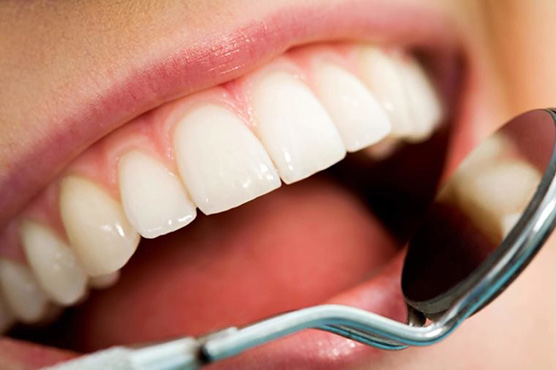Study of 'no drill' dentistry shows many fillings are unnecessary

The study was published in Community Dentistry and Oral Epidemiology in 2015.
(Web Desk) – Many of us fear going to the dentist, and that fear is made worse by the dreadful prospect that on any given visit, you could be subjected to a whirring drill boring its way through your poor, hurty teeth.
But the findings of a seven-year study by Australian researchers suggest that many of us have nothing to worry about, with research into ‘no drill’ oral care techniques showing there’s often no need for the traditional ‘fill and drill’ approach that has defined dentistry for decades.
"It’s unnecessary for patients to have fillings because they’re not required in many cases of dental decay," study lead author Wendell Evans of the University of Sydney said back in 2015.
"This research signals the need for a major shift in the way tooth decay is managed by dentists… Our study shows that a preventative approach has major benefits compared to current practice."
The study was published in Community Dentistry and Oral Epidemiology in 2015. According to the researchers, tooth decay is not the rapidly progressive phenomenon that dentists long believed it was.
Because dentists used to think decay was fast-moving, the conventional practice was to identify early decay, remove it immediately to prevent the tooth’s surface breaking up into cavities, and fill up the hole that was left with filling.
But decay is not always progressive, said Evans and his team, and even when it is, it develops more slowly than dentists used to think.
"For example, it takes an average of four to eight years for decay to progress from the tooth’s outer layer (enamel) to the inner layer (dentine)," he said. "That is plenty of time for the decay to be detected and treated before it becomes a cavity and requires a filling."
Developing a set of protocols they call the Caries Management System (CMS), the researchers say tooth decay can be stopped, reversed, and prevented long before a drill comes into play.
Through assessments of decay risk, interpretation of dental X-rays, and risk-specific monitoring, signs of early decay that haven’t yet created cavities are detected and treated with a high-concentration fluoride varnish, rather than resorting to more invasive means.
Evan and his colleagues showed that decay risk was reduced by 30 to 50 percent among patients who received CMS.
"[The CMS] showed that early decay could be stopped and reversed and that the need for drilling and filling was reduced dramatically," said Evans. "A tooth should be only be drilled and filled where an actual hole-in-the-tooth (cavity) is already evident."
Patients also need to get involved to make the most of CMS, paying attention to their tooth-brushing skills at home, and restricting between-meal snacks and beverages that contain added sugar.
But if you can abide by these rules and help make the system work, up to half of the cavities (and drilling) in your future could be eliminated, so surely it’s worth making a few small sacrifices?
The study was published in Community Dentistry and Oral Epidemiology.


